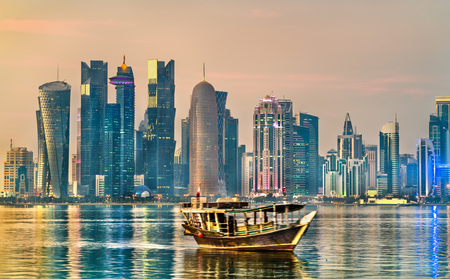The Traditional Dhow Qatar is a cherished symbol of Qatar’s maritime heritage, embodying centuries of craftsmanship and cultural significance. As Qatar evolves into a modern metropolis, the dhow remains a potent reminder of the country’s seafaring past. This article delves into the history, construction, and cultural importance of traditional dhow boats in Qatar, offering a comprehensive guide to understanding and experiencing these iconic vessels.
The Historical Significance of Dhows
Origins and Evolution
The dhow is an ancient type of sailing vessel that has been integral to the maritime culture of the Arabian Gulf for centuries. Its origins are believed to date back to the early Islamic period, with references to similar boats found in ancient texts and historical accounts. Dhows have historically been used for various purposes, including fishing, pearling, and trade.
In Qatar, dhows played a pivotal role in the pearling industry, which was the backbone of the economy long before the discovery of oil. These boats were essential for navigating the waters of the Gulf to harvest pearls, a highly prized commodity that shaped the livelihoods of many Qataris.
Types of Dhows
Different types of dhows have been used throughout Qatar’s history, each serving specific functions:
Sambuk: Known for its speed and size, the sambuk was a favored choice for trading and pearling. Its robust design allowed it to withstand the rigors of long-distance voyages and heavy loads.
Baghlah: This type of dhow was primarily used for cargo transport. Its large hull made it suitable for carrying substantial amounts of goods, facilitating trade between Qatar and neighboring regions.
Jalboot: Smaller and lighter, the jalboot was used for fishing and coastal navigation. Its maneuverability made it ideal for operating in shallow waters and narrow channels.
Barkass: Specialized for fishing, the barkass was designed to be agile and efficient in the coastal waters where many fish species are found.
The Art of Dhow Construction
Traditional Craftsmanship
The construction of a traditional dhow is an intricate process that reflects a deep understanding of maritime traditions. Skilled artisans, known as “Naej,” use time-tested techniques to build these wooden boats. The process involves several key stages:
Wood Selection: High-quality hardwoods such as teak and mahogany are selected for their durability and resistance to the marine environment. The wood is carefully prepared and treated to ensure longevity.
Frame Construction: The dhow’s frame is built using traditional methods that involve pegged joints and natural resins. This construction technique allows for flexibility and strength, essential for handling the stresses of sailing.
Hull Shaping: The hull is shaped using hand tools to create the distinctive curves that characterize dhows. This shaping process is crucial for the boat’s performance and aesthetic appeal.
Sailing Rig: Dhows are equipped with a lateen sail, a large triangular sail that provides efficient propulsion. The rigging is designed to maximize wind capture and enhance the dhow’s maneuverability.
Modern Adaptations
While traditional dhow-building techniques remain prevalent, modern adaptations have introduced new materials and technologies to improve performance and durability. Despite these advancements, the essence of traditional craftsmanship continues to be preserved, ensuring that the cultural heritage of dhows remains intact.
Experiencing Traditional Dhows in Qatar
Dhow Cruises
One of the most immersive ways to experience the charm of traditional dhows is through a dhow cruise. These cruises offer a unique perspective on Qatar’s coastline and allow visitors to enjoy the beauty of the Arabian Gulf while learning about the historical significance of dhows.
Doha Corniche: A cruise along the Doha Corniche provides stunning views of the city’s skyline and landmarks. The historic dhows used for these cruises are often adorned with traditional decorations, offering a glimpse into Qatar’s maritime past.
Al Khor: The coastal town of Al Khor is known for its picturesque waters and serene surroundings. A dhow cruise in this area provides a tranquil experience, with opportunities to observe local marine life and enjoy the natural beauty of the coastline.
Pearl Island: Cruises around Pearl Island offer a blend of tradition and luxury. The clear waters and scenic views provide a perfect setting for a leisurely boat trip, allowing visitors to relax and appreciate the significance of dhows in Qatar’s history.
Festivals and Events
Qatar hosts various festivals and events that celebrate its maritime heritage, with dhows playing a central role:
Qatar International Boat Show: This annual event features a range of boats, including traditional dhows. It offers an opportunity for boat enthusiasts to explore different types of vessels and learn about their history and construction.
Doha Traditional Dhow Festival: Held annually, this festival showcases dhow races, exhibitions, and cultural performances. It’s a vibrant celebration of Qatar’s maritime heritage, with activities that highlight the importance of dhows in Qatari culture.
Museums and Cultural Centers
Several museums and cultural centers in Qatar feature exhibits related to dhows and maritime history:
Museum of Islamic Art: The Museum of Islamic Art in Doha includes exhibits related to Islamic culture and history, including artifacts and displays related to traditional dhows and maritime traditions.
Qatar Maritime Museum: Located in Doha, this museum focuses on Qatar’s maritime history and features exhibits showcasing traditional dhows and their role in the country’s development.
Katara Cultural Village: Katara hosts various cultural events and exhibitions, including those centered on traditional dhows. The village’s waterfront location provides a fitting backdrop for exploring Qatar’s maritime heritage.
Cultural and Symbolic Importance
A Symbol of Heritage
The dhow is more than just a boat; it represents Qatar’s maritime heritage and cultural identity. For many Qataris, dhows are a link to their ancestors and a reminder of the country’s historical reliance on the sea. The design, craftsmanship, and use of dhows reflect the resourcefulness and adaptability of the people who depended on them for their livelihoods.
Educational Value
Learning about dhows offers valuable insights into Qatar’s history, including its economic, cultural, and social development. Understanding the role of dhows in trade, pearling, and daily life helps visitors appreciate the historical context of modern Qatar. Educational tours and workshops provide hands-on experiences with traditional boat-building techniques and maritime culture.
Preservation Efforts
Preserving the tradition of dhow-building is essential for maintaining Qatar’s maritime heritage. Various organizations and cultural institutions in Qatar work to support traditional craftsmanship and celebrate the history of dhows. These efforts help ensure that the legacy of dhows continues to be appreciated and passed on to future generations.
Practical Information for Visitors
Booking a Dhow Cruise
To experience a traditional dhow cruise, consider booking through a reputable tour operator like Murex Qatar Tours. These operators offer a range of dhow cruise options, including private charters and group tours. Booking in advance ensures availability and allows for customization based on your preferences.
What to Wear and Bring
When embarking on a dhow cruise or visiting maritime attractions, wear comfortable clothing and bring essentials such as sunscreen, a hat, and a camera. Although dhows are typically equipped with basic amenities, it’s a good idea to bring water and snacks for longer trips.
Respecting Local Customs
Respect local customs and traditions while exploring dhows and maritime heritage sites. Follow any guidelines provided by tour operators or museum staff and be mindful of cultural sensitivities.
Conclusion
The traditional dhow boat is a living testament to Qatar’s maritime heritage and cultural identity. From its historical role in trade and pearling to its enduring presence in contemporary celebrations, the dhow embodies the spirit of Qatar’s connection to the sea. Whether you’re exploring the art of dhow construction, enjoying a scenic cruise, or participating in cultural festivals, experiencing dhows offers a unique and enriching insight into Qatar’s rich maritime history.
Murex Qatar Tours invites you to embark on a journey to discover the beauty and significance of traditional dhows. Through guided tours, cultural events, and educational experiences, you’ll gain a deeper appreciation for this iconic symbol of Qatar’s heritage and enjoy an unforgettable exploration of the Arabian Gulf’s maritime legacy.




